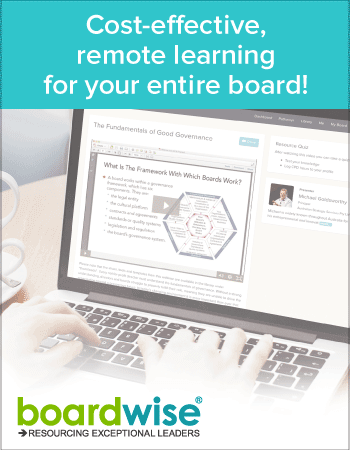non-profit-fact-sheets
Illiquidity Vs Insolvency
Published: October 10, 2023
Read Time: 7 minutes

A non-profit organisation’s financial health is vital to achieving its mission. As stewards of the organisation, board members must understand two key financial concepts - illiquidity and insolvency. On the surface, they may seem similar. But illiquidity and insolvency stem from different causes and have different implications.
This article will explain what illiquidity and insolvency mean, their key differences, and provide real-world examples to illustrate how non-profit boards should interpret and respond to signs of financial distress.
A clear grasp of liquidity and solvency dynamics can help boards foresee and resolve issues before they become existential threats.
Defining Illiquidity
Illiquidity means an organisation lacks available cash and liquid assets to meet its current obligations. Expenses are due before new revenues can be collected.
For example, a non-profit may expect substantial grant disbursements in a month. But payroll, rent, and bills must be paid now. The organisation relies on grants, not sales, so it cannot accelerate cash inflows if needed. With reserves depleted, the non-profit faces an illiquidity crisis even though its assets still exceed liabilities.
This mismatch between short-term cash needs and cash availability creates illiquidity.
It indicates potential problems converting even plentiful assets into immediate cash. Signs of illiquidity include:
- Maxing out credit lines
- Delaying payments to vendors
- Inability to make payroll
- Taking on short-term high-interest loans
Illiquidity stems from core aspects of the non-profit business model. Revenues can be seasonal or project-based. Some grants restrict allowed spending uses. These features can make smoothing cash flows challenging.
However, addressing illiquidity via careful financial management is usually feasible. Options like negotiating modified payment terms, fundraising, or accessing new financing can resolve temporary gaps. The assets backing the organisation still provide underlying strength, even if generating cash flow from them is currently difficult.
Defining Insolvency
Insolvency occurs when liabilities exceed assets - debts outweigh the value of everything the organisation owns. This net deficit makes paying back obligations impossible without outside assistance.
Insolvency creeps up over years, as losses accumulate or asset values decline. Or sudden events like investment losses or lawsuits trigger insolvency.
But regardless of speed, the root cause is expenses and obligations outstripping revenues and assets.
Signs of insolvency include:
- Consistently negative net income
- Falling net assets year-over-year
- Defaulting on debt payments
- Declining asset values leaving liabilities larger
Insolvency implies illiquidity - when liabilities exceed assets, generating cash is difficult. But illiquidity does not always lead to insolvency. Assets may still cover obligations, even if turning them into cash quickly poses challenges.
Addressing insolvency requires major changes like cutting costs, selling assets, debt restructuring, or even bankruptcy. It cannot be resolved simply by stretching payables or taking on new debt. The organisation must align obligations with assets and income levels.
Key Differences Between Illiquidity and Insolvency
Short Term vs. Long Term
Illiquidity is a short-term cash flow issue. The organisation cannot pay today’s bills, even though assets still exceed liabilities. Insolvency is a long-term balance sheet issue indicating assets no longer support obligations.
For example, a non-profit may be illiquid this month due to a grant delay. A bridge loan or line of credit helps cover bills until the grant arrives. No major overhaul is needed. But if unprofitable operations drain assets year after year, insolvency results. The problems are no longer temporary or superficial.
Assets vs. Liabilities
Illiquid organisations can still have positive net assets, with resources exceeding obligations on paper. Their challenge lies in accessing those resources.
Insolvent organisations have net liabilities exceeding assets. Their debts outweigh owned resources, indicating deeper issues.
Saving an Illiquid Organisation
Illiquidity can sometimes be resolved in the short term by buying time from creditors, fundraising, or securing new financing. The underlying business model is still viable, just temporarily short on cash.
But solving insolvency requires major restructuring of assets, liabilities, expenses, or operations. The current scale or form of the business is unsustainable. Short-term cash injections cannot save an insolvent organisation.
When Illiquidity Leads to Insolvency
Left unaddressed, periods of illiquidity can sometimes spiral into insolvency. Covering monthly deficits via high-interest financing erodes the balance sheet over time. Assets shrink while new liabilities are added.
Prolonged illiquidity can also force liquidation of assets at low prices, accelerating insolvency. Non-profits should beware illiquidity dragging on for many months or occurring in multiple consecutive years. It likely signals the need for deeper financial changes.
Real-World Non-Profit Illiquidity Examples
Seasonal Revenue Cycles
Many non-profits rely heavily on year-end giving campaigns. They may receive 30-50% of contributions in November and December. But expenses are steadier throughout the year. This mismatch can lead to late fall illiquidity if campaigns fall short. Fund balances are depleted right before major new money arrives. Short-term financing bridges the gap.
Grant Timing Issues
Foundations and governments often disburse grant money on a delayed timeline. Non-profits must front expenses for months before receiving reimbursement. Earned revenues and prior-year grants fund operations in the meantime. When grants are delayed or expenses grow unexpectedly, illiquidity results until new grant dollars arrive.
Overambitious Growth
Expanding programs and services often precedes funding growth. Hiring staff, acquiring technology, and project investments may fit the non-profit’s mission but outpace incoming revenue. As the budget deficit grows, tapping reserves and credit to keep operating leads to illiquidity.
External Factors
Recessions can reduce donor income and government grants simultaneously. Natural disasters might also disrupt operations. These sudden external pressures can drain otherwise stable non-profits of cash rapidly. Illiquidity emerges even if the organisation was financially strong pre-crisis.
Real-World Non-Profit Insolvency Examples
Investment Losses
Some non-profits rely on investment returns to fund a material portion of their budget. This exposes them to market volatility. Stock market downturns directly deplete assets. But organisations often do not adjust spending commensurately. The ensuing insolvency may only fully surface once losses have accumulated.
Lawsuits and Settlements
Costly lawsuits or legal settlements can instantly render a non-profit insolvent by imposing large liabilities exceeding current assets. Even if the organisation successfully fundraises later, the upfront liability cratering the balance sheet marks the moment of insolvency.
Declining Industries
Non-profits focused on shrinking fields like print news media and coal face falling revenues without corresponding cost cuts. Remaining assets slowly dwindle while legacy obligations persist. Absent major changes, insolvency gradually takes hold as the business loses alignment with market realities.
Becoming Overextended
Taking on major fixed costs like real estate or equipment to fulfil expansion plans can backfire if growth stalls. The ensuing deficits and debt obligations outweigh the value of under-utilised assets. Without scaling back, insolvency results. Expenses exceed sustainable revenue levels.
How Non-Profit Boards Should Respond
1. Foresee and plan for illiquidity periods
By analysing historical revenue cycles and building data-driven budgets and forecasts, boards can spot illiquidity risks before they become urgent problems requiring short-term borrowing at high cost.
2. Address illiquidity before it creates insolvency
Seeking grant flexibility, short-term loans, or lines of credit to handle illiquidity is prudent. But chronic illiquidity signals a need for systemic changes to prevent spiralling into insolvency.
3. Adjust to revenue realities quickly
Boards play a key role in aligning operations to fiscal realities, especially when market forces lead to declining income sources. Making painful but necessary expense cuts quickly preserves assets and avoids insolvency.
4. Build rainy day reserves
Building liquidity buffers creates more options when illiquidity strikes due to sudden events like recessions. Conserving net assets during good years prevents illiquidity becoming insolvency in down years.
5. Monitor metrics like net income and asset values
Insolvency creeps up over years or even decades by accumulating losses. Tracking net assets, debts, and operational profitability helps boards spot negative trends and course correct before insolvency takes hold.
The Bottom Line
By distinguishing between illiquidity and insolvency, non-profit boards can accurately diagnose financial issues and respond appropriately. Illiquidity warrants swift action to buy time and bridge gaps, given the organisation’s otherwise solid footing. Insolvency requires deeper changes to align operations with resources.
Maintaining financial health includes anticipating illiquidity risks inherent to non-profit business models and taking action before temporary challenges snowball into existential threats.
Keeping a sharp eye on key metrics and market forces helps boards safeguard their organisation’s financial sustainability and mission impact over the long run.
Podcast Episode: Navigating Financial Health – Illiquidity vs. Insolvency
Prefer to listen? Check out the Our Cat Herder Herding Cats discussion on Illiquidity vs. Insolvency.
Additional Resources
Financial Metrics: A Guide for NFP Boards
Key Stages of Building a Financial Model for NFP Organisations
Financial Reporting to the Board
The Art of Financial Management
The Challenge of being the Treasurer: Social Outcomes and Financial Responsibility
Share this Article
Recommended Reading
Recommended Viewing
Author
- About
-
Better Boards connects the leaders of Australasian non-profit organisations to the knowledge and networks necessary to grow and develop their leadership skills and build a strong governance framework for their organisation.
Found this article useful or informative?
Join 5,000+ not-for-profit & for-purpose directors receiving the latest insights on governance and leadership.
Receive a free e-book on improving your board decisions when you subscribe.
Unsubscribe anytime. We care about your privacy - read our Privacy Policy .










